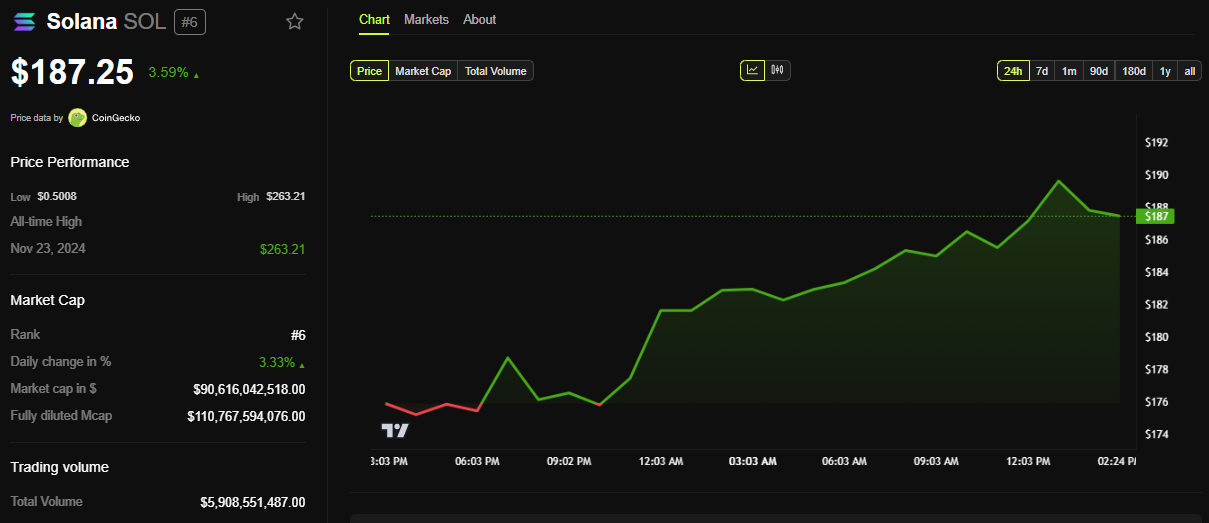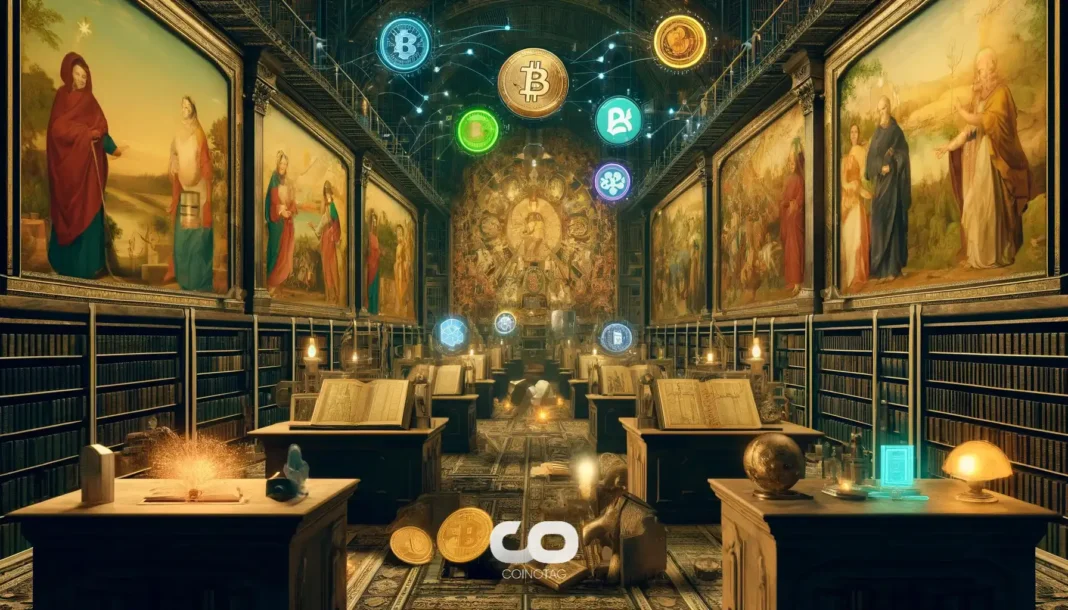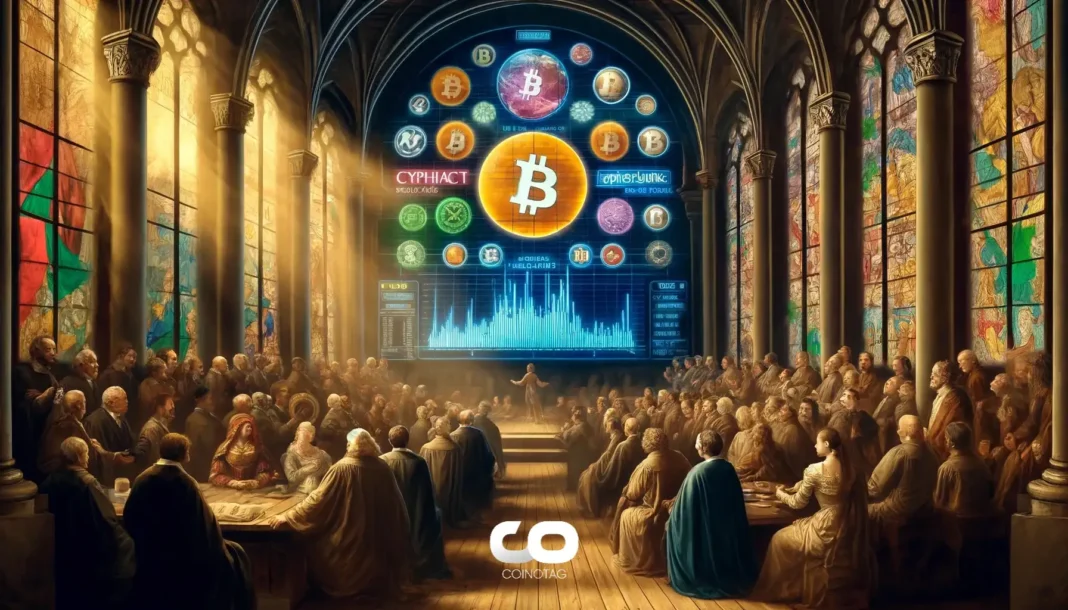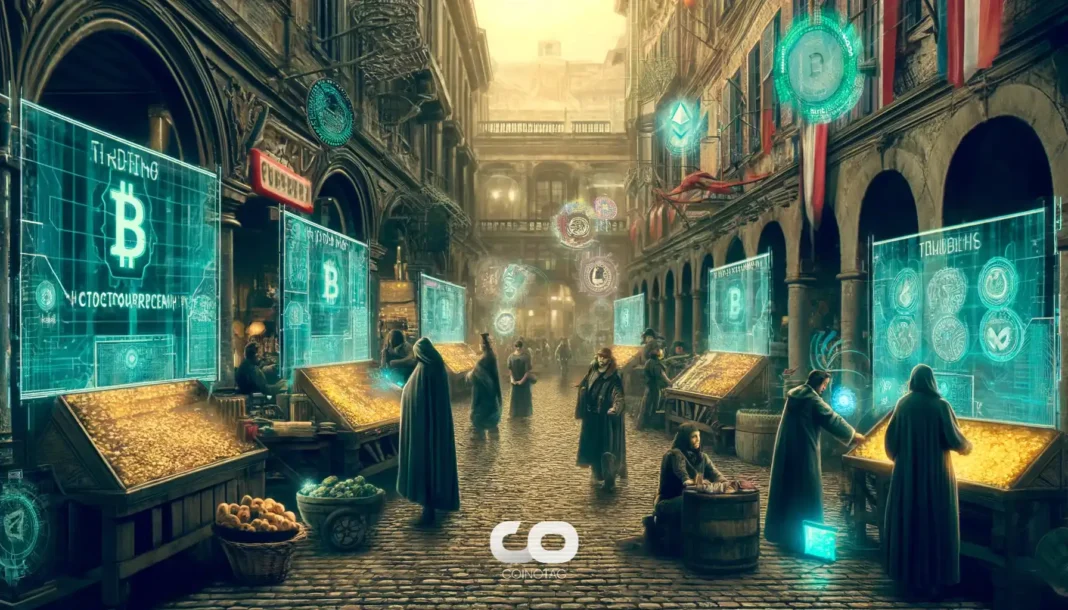| COINOTAG recommends • Exchange signup |
| 💹 Trade with pro tools |
| Fast execution, robust charts, clean risk controls. |
| 👉 Open account → |
| COINOTAG recommends • Exchange signup |
| 🚀 Smooth orders, clear control |
| Advanced order types and market depth in one view. |
| 👉 Create account → |
| COINOTAG recommends • Exchange signup |
| 📈 Clarity in volatile markets |
| Plan entries & exits, manage positions with discipline. |
| 👉 Sign up → |
| COINOTAG recommends • Exchange signup |
| ⚡ Speed, depth, reliability |
| Execute confidently when timing matters. |
| 👉 Open account → |
| COINOTAG recommends • Exchange signup |
| 🧭 A focused workflow for traders |
| Alerts, watchlists, and a repeatable process. |
| 👉 Get started → |
| COINOTAG recommends • Exchange signup |
| ✅ Data‑driven decisions |
| Focus on process—not noise. |
| 👉 Sign up → |
-
Solana has unveiled Roam, a groundbreaking decentralized WiFi network aimed at transforming global connectivity through over a million hotspots.
-
This initiative not only rewards users with ROAM tokens but also facilitates secure connections and crypto mining, promoting Decentralized Wireless (DeWi) adoption.
-
“Meet Roam — unifying 1M+ WiFi hotspots into a secure global network on Solana by rewarding users for contributing,” stated Solana in its announcement.
Discover how Solana’s new Roam network could reshape global connectivity and the role of DeWi, while paying users for their contributions with ROAM tokens.
Solana to Revolutionize Connectivity with DeWi and DePIN
According to its official website, Roam utilizes Open Roaming protocols, positioning itself as a leading innovation in the Decentralized Wireless (DeWi) space. The project reflects Solana’s dedication to redefining global connectivity.
“Meet Roam — unifying 1M+ WiFi hotspots into a secure global network on Solana by rewarding users for contributing,” Solana wrote.
Leveraging these technologies, Roam aims to provide secure, reliable, and seamless connectivity. If successful, the project could drive broader adoption of DeWi technologies and strengthen Solana’s reputation as an industry innovator.
| COINOTAG recommends • Professional traders group |
| 💎 Join a professional trading community |
| Work with senior traders, research‑backed setups, and risk‑first frameworks. |
| 👉 Join the group → |
| COINOTAG recommends • Professional traders group |
| 📊 Transparent performance, real process |
| Spot strategies with documented months of triple‑digit runs during strong trends; futures plans use defined R:R and sizing. |
| 👉 Get access → |
| COINOTAG recommends • Professional traders group |
| 🧭 Research → Plan → Execute |
| Daily levels, watchlists, and post‑trade reviews to build consistency. |
| 👉 Join now → |
| COINOTAG recommends • Professional traders group |
| 🛡️ Risk comes first |
| Sizing methods, invalidation rules, and R‑multiples baked into every plan. |
| 👉 Start today → |
| COINOTAG recommends • Professional traders group |
| 🧠 Learn the “why” behind each trade |
| Live breakdowns, playbooks, and framework‑first education. |
| 👉 Join the group → |
| COINOTAG recommends • Professional traders group |
| 🚀 Insider • APEX • INNER CIRCLE |
| Choose the depth you need—tools, coaching, and member rooms. |
| 👉 Explore tiers → |
Further, the initiative integrates user incentives with novel connectivity solutions. Users can access millions of free WiFi points while earning rewards through daily check-ins and staking Roam Tokens (ROAM). With this, Solana aims to create a self-sustaining network that prioritizes security and efficiency. The platform’s features include:
- Roam Miner: Enables users to enhance their rewards while staying connected. It also offers crypto mining capabilities alongside enterprise-grade connection security.
- Roam Tokens: Users can accumulate Roam Points, which can be staked to earn $ROAM tokens, creating an incentive-driven ecosystem.
- Check-In Rewards: A daily check-in system allows users to earn Roam Points, enhancing their rewards over time.
The launch of Roam adds to Solana’s growing list of innovations. In September, the blockchain network introduced the Seeker Phone, a follow-up to its earlier Saga smartphone designed specifically for Web3 users.
| COINOTAG recommends • Exchange signup |
| 📈 Clear interface, precise orders |
| Sharp entries & exits with actionable alerts. |
| 👉 Create free account → |
| COINOTAG recommends • Exchange signup |
| 🧠 Smarter tools. Better decisions. |
| Depth analytics and risk features in one view. |
| 👉 Sign up → |
| COINOTAG recommends • Exchange signup |
| 🎯 Take control of entries & exits |
| Set alerts, define stops, execute consistently. |
| 👉 Open account → |
| COINOTAG recommends • Exchange signup |
| 🛠️ From idea to execution |
| Turn setups into plans with practical order types. |
| 👉 Join now → |
| COINOTAG recommends • Exchange signup |
| 📋 Trade your plan |
| Watchlists and routing that support focus. |
| 👉 Get started → |
| COINOTAG recommends • Exchange signup |
| 📊 Precision without the noise |
| Data‑first workflows for active traders. |
| 👉 Sign up → |
Despite Solana’s efforts to integrate blockchain capabilities into modern technology, the innovations have faced criticism. Some users believe the products are ahead of their time and lack widespread appeal. Others argue that certain initiatives struggled to gain traction due to limited market readiness and high development costs.
The market’s response to Roam’s launch has been relatively muted, with Solana’s native token, SOL, posting only a modest 3% price increase after the announcement, reflecting cautious investor optimism.
| COINOTAG recommends • Traders club |
| ⚡ Futures with discipline |
| Defined R:R, pre‑set invalidation, execution checklists. |
| 👉 Join the club → |
| COINOTAG recommends • Traders club |
| 🎯 Spot strategies that compound |
| Momentum & accumulation frameworks managed with clear risk. |
| 👉 Get access → |
| COINOTAG recommends • Traders club |
| 🏛️ APEX tier for serious traders |
| Deep dives, analyst Q&A, and accountability sprints. |
| 👉 Explore APEX → |
| COINOTAG recommends • Traders club |
| 📈 Real‑time market structure |
| Key levels, liquidity zones, and actionable context. |
| 👉 Join now → |
| COINOTAG recommends • Traders club |
| 🔔 Smart alerts, not noise |
| Context‑rich notifications tied to plans and risk—never hype. |
| 👉 Get access → |
| COINOTAG recommends • Traders club |
| 🤝 Peer review & coaching |
| Hands‑on feedback that sharpens execution and risk control. |
| 👉 Join the club → |

As Solana continues to push the envelope with projects like Roam, its ability to balance innovation with practicality will be crucial in determining the long-term success of these ventures. Nevertheless, Solana’s latest innovation, Roam, signals the network’s focus on driving blockchain innovation in real-world applications.
Conclusion
In summary, Solana’s launch of Roam represents a significant step toward enhancing global connectivity through decentralized solutions. By promoting user engagement and rewarding participation, the project may ultimately foster a thriving ecosystem for decentralized wireless networks. As Solana navigates the challenges of innovation, its success will depend on the practical implementation and user acceptance of its ambitious initiatives.
| COINOTAG recommends • Members‑only research |
| 📌 Curated setups, clearly explained |
| Entry, invalidation, targets, and R:R defined before execution. |
| 👉 Get access → |
| COINOTAG recommends • Members‑only research |
| 🧠 Data‑led decision making |
| Technical + flow + context synthesized into actionable plans. |
| 👉 Join now → |
| COINOTAG recommends • Members‑only research |
| 🧱 Consistency over hype |
| Repeatable rules, realistic expectations, and a calmer mindset. |
| 👉 Get access → |
| COINOTAG recommends • Members‑only research |
| 🕒 Patience is an edge |
| Wait for confirmation and manage risk with checklists. |
| 👉 Join now → |
| COINOTAG recommends • Members‑only research |
| 💼 Professional mentorship |
| Guidance from seasoned traders and structured feedback loops. |
| 👉 Get access → |
| COINOTAG recommends • Members‑only research |
| 🧮 Track • Review • Improve |
| Documented PnL tracking and post‑mortems to accelerate learning. |
| 👉 Join now → |








